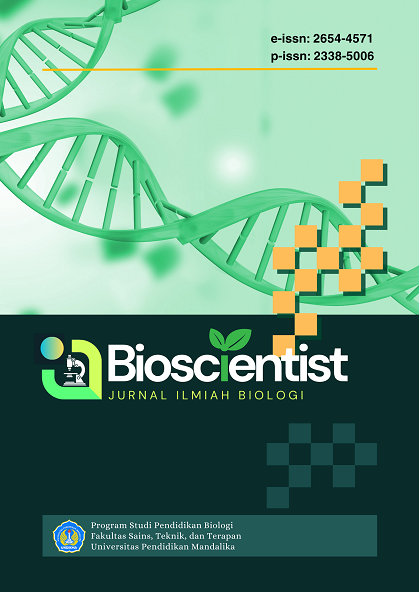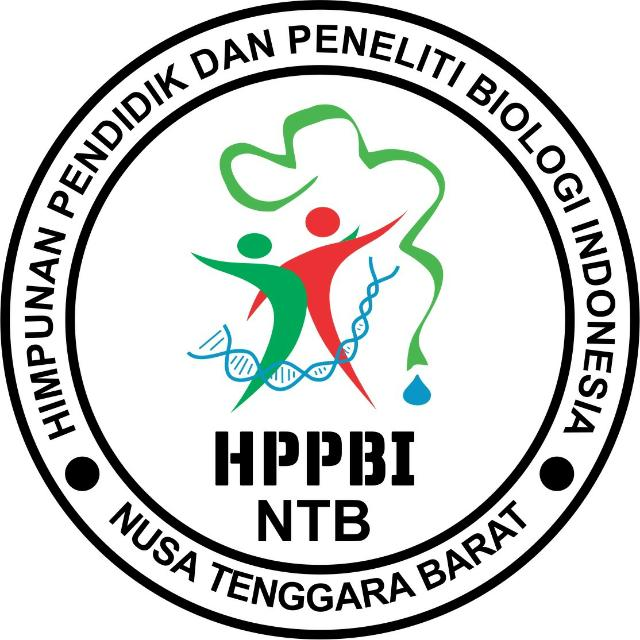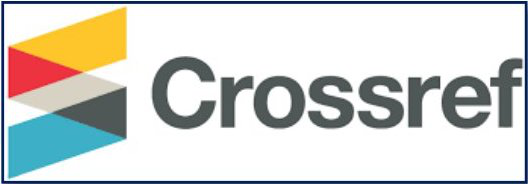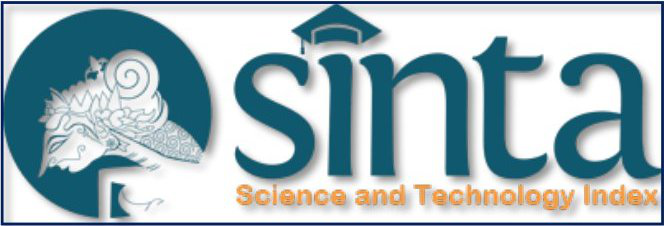Efek Kadar Urea Nitrogen Darah (BUN) pada Tikus Putih (Rattus norvegicus) Bunting Setelah Pemberian Monosodium Glutamat (MSG) Organik dan Sintetis
DOI:
https://doi.org/10.33394/bioscientist.v13i2.15781Keywords:
Gaya hidup sehat, kebuntingan, risiko kesehatanAbstract
This study aims to explores blood urea nitrogen (BUN) levels in Wistar rats exposed to synthetic and organic MSG to identify potential renoprotective effects. The study design involved a control group (K) that was fed a normal diet only, and six treatment groups (P1–P6) that received doses of organic or synthetic MSG at 60, 120, or 240 mg/kg BW for 19 days. Each group consisted of six rats. MSG was administered orally and BUN levels were measured using the colorimetric method. The results showed no significant difference in BUN levels between the control group and the treatment groups (p > 0.05). The highest BUN levels were found in the control group, while the lowest levels were found in the group that received the highest dose of synthetic MSG (240 mg/kg BW). Additionally, BUN levels were lower with organic MSG at 120 and 240 mg/kg BW than with the 60 mg/kg BW dose, suggesting that bioactive compounds in tempeh and pineapple bromelain may have renoprotective effects. While the lowest BUN levels were observed in the group receiving the highest dose of synthetic MSG (240 mg/kg BW), this may be due to reduced protein intake or other metabolic adaptations rather than safety factors. Synthetic MSG at a dose of 240 mg/kg BW produced the lowest BUN levels, which may indicate reduced protein intake or other metabolic adaptations, rather than safety factors.References
Adam, S., Alsanousi, N., Abdalla, S., & Shareef, A. (2019). The toxic effect of monosodium glutamate on liver and kidney functions in Wister rats. NJST, 3, 7-14.
Baker, H. J., Linssey, J. R., & Weisbroth, S. H. (1979). The laboratory rat: Biology and diseases (pp. 114–117). Academic Press.
Bayram, H. M., Akgöz, H. F., Kızıldemir, Ö., & Öztürkcan, S. A. (2023). Monosodium glutamate: Review on preclinical and clinical reports. Biointerface Research in Applied Chemistry.
Celestino, M., Balmaceda Valdez, V., Brun, P., et al. (2021). Differential effects of sodium chloride and monosodium glutamate on kidney of adult and aging mice. Scientific Reports, 11, 481. https://doi.org/10.1038/s41598-020-80048-z
Cheung, K. L., & Lafayette, R. A. (2013). Renal physiology of pregnancy. Advances in chronic kidney disease, 20(3), 209–214. https://doi.org/10.1053/j.ackd.2013.01.012
Divate, N. R., Ardanareswari, K., Yu, Y.-P., Chen, Y.-C., Liao, J.-W., & Chung, Y.-C. (2023). Effects of soybean and tempeh water extracts on regulation of intestinal flora and prevention of colon precancerous lesions in rats. Processes, 11(1), 257. https://doi.org/10.3390/pr11010257
Ezeokeke, C. T., & Ezekwe, O. C. (2017). Effect of monosodium glutamate on the liver and kidney function of adult albino rats. 8, 34-43.
Fauziah, D. E., Setyaningsih, E., Aryanti, F., Sagita, N. P., Febrianti, U. A. P., Febriyanti, A., ... & Wicaksono, M. G. (2025). Gambaran Histologi Ginjal Tikus Putih (Rattus norvegicus) Bunting yang Mengkonsumsi MSG Organik dan MSG Sintetis. BioEksakta: Jurnal Ilmiah Biologi Unsoed, 7(1), 52-59.
Haque, S. M. U., Kidani, E., Jefri, N. J. M., & Mokhtar, S. A. (2023). A comparative study of ‘tempe’ produced from different beans as a protein source in Malaysia and Japan. Chemical Engineering Transactions, 106, 1363-1368.
Hidayat, M., Prahastuti, S., Riany, D. U., Soemardji, A. A., Suliska, N., Garmana, A. N., Assiddiq, B. F., & Hasan, K. (2019). Kidney therapeutic potential of peptides derived from the bromelain hydrolysis of green peas protein. Iranian Journal of Basic Medical Sciences, 22(9), 1016–1025. https://doi.org/10.22038/ijbms.2019.33945.8075
Insuan, O., Janchai, P., Thongchuai, B., Chaiwongsa, R., Khamchun, S., Saoin, S., Insuan, W., Pothacharoen, P., Apiwatanapiwat, W., Boondaeng, A., & Vaithanomsat, P. (2021). Anti-inflammatory effect of pineapple rhizome bromelain through downregulation of the NF-κB- and MAPKs-signaling pathways in lipopolysaccharide (LPS)-stimulated RAW264.7 cells. Current Issues in Molecular Biology, 43(1), 93–106. https://doi.org/10.3390/cimb43010008
Iswara, I., & Yonata, A. (2016). Efek toksik konsumsi monosodium glutamate. Medical Journal of Lampung University [MAJORITY], 5(3), 100-104.
Jubaidi, F. F., Mathialagan, R. D., Noor, M. M., Taib, I. S., & Budin, S. B. (2019). Monosodium glutamate daily oral supplementation: Study of its effects on male reproductive system on rat model. Systems Biology in Reproductive Medicine, 65(3), 194–204. https://doi.org/10.1080/19396368.2019.1573274
Kayode, O. T., Bello, J. A., Oguntola, J. A., Kayode, A. A. A., & Olukoya, D. K. (2023). The interplay between monosodium glutamate (MSG) consumption and metabolic disorders. Heliyon, 9(9), e19675. https://doi.org/10.1016/j.heliyon.2023.e19675
Khanifah, F. (2018). Analisis kadar protein total pada tempe fermentasi dengan penambahan ekstrak nanas (Ananas comosus (L.) Merr). Jurnal Nutrisia, 20(1), 34–37. https://doi.org/10.29238/jnutri.v20i1.113
Kyaw, T. S., Sukmak, M., Nahok, K., Sharma, A., Silsirivanit, A., Lert-Itthiporn, W., ... & Cha'on, U. (2022). Monosodium glutamate consumption reduces the renal excretion of trimethylamine N-oxide and the abundance of Akkermansia muciniphila in the gut. Biochemical and Biophysical Research Communications, 630, 158–166. https://doi.org/10.1016/j.bbrc.2022.09.038
Li, L., Sun, N., Zhang, L., Xu, G., Liu, J., Hu, J., Zhang, Z., Lou, J., Deng, H., Shen, Z., & Han, L. (2020). Fast food consumption among young adolescents aged 12-15 years in 54 low- and middle-income countries. Global Health Action, 13(1), 1795438. https://doi.org/10.1080/16549716.2020.1795438
Matsuo, M., Morikawa, Y., Hashimoto, Y., & Baratz, R. S. (1986). Changes in blood urea nitrogen (BUN) concentration during pregnancy in the rat with or without obstructive uremia. Experimental Pathology, 30(4), 203-208. https://doi.org/10.1016/S0232-1513(86)80078-0
Masuda, K., Tanaka, Y., Kanehisa, M., Ninomiya, T., Inoue, A., Higuma, H., Kawashima, C., Nakanishi, M., Okamoto, K., & Akiyoshi, J. (2017). Natural reduced water suppressed anxiety and protected the heightened oxidative stress in rats. Neuropsychiatric Disease and Treatment, 13, 2357–2362. https://doi.org/10.2147/NDT.S138289
Millizia, A., Maulina, N., & Fahreza, F. (2021). Pengaruh pemberian monosodium glutamat peroral terhadap nekrosis tubulus kontortus proksimal ginjal tikus putih (Rattus norvegicus) jantan galur Wistar. Jurnal Kedokteran Nanggoe Medika, 4(1), 1-8.
Nisa, H., Syamsun, A., & Lestarini, I. A. (2017). The effect of high dose monosodium glutamate administration towards level of serum urea-creatinine on Wistar rats. Jurnal Kedokteran, 2(1). https://doi.org/10.29303/jku.v2i1.52
Nwagwu, M. O., Cook, A., & Langley-Evans, S. C. (2000). Evidence of progressive deterioration of renal function in rats exposed to a maternal low-protein diet in utero. British Journal of Nutrition, 83(1), 79-85.
Pongking, T., Haonon, O., Dangtakot, R., Onsurathum, S., Jusakul, A., et al. (2020). A combination of monosodium glutamate and high-fat and high-fructose diets increases the risk of kidney injury, gut dysbiosis and host-microbial co-metabolism. PLOS ONE, 15(4), e0231237. https://doi.org/10.1371/journal.pone.0231237
Renczés, E., Marônek, M., Gaál KovalÄÃková, A., Vavrincová-Yaghi, D., Tóthová, L. U., & Hodosy, J. (2020). Behavioral changes during development of chronic kidney disease in rats. Frontiers in Medicine, 6, 311. https://doi.org/10.3389/fmed.2019.00311
Sharma, A. (2015). Monosodium glutamate-induced oxidative kidney damage and possible mechanisms: A mini-review. Journal of Biomedical Science, 22, 93. https://doi.org/10.1186/s12929-015-0192-5
Seenak, P., Kumphune, S., Malakul, W., Chotima, R., & Nernpermpisooth, N. (2021). Pineapple consumption reduced cardiac oxidative stress and inflammation in high cholesterol diet-fed rats. Nutrition & Metabolism, 18(1), 36. https://doi.org/10.1186/s12986-021-00566-z
Tawfik, M., & Al-Badr, N. (2012). Adverse effects of monosodium glutamate on liver and kidney functions in adult rats and potential protective effect of vitamins C and E. Food and Nutrition Sciences, 3(5), 651-659. https://doi.org/10.4236/fns.2012.35089
Thongsepee, N., Martviset, P., Chantree, P., Sornchuer, P., Sangpairoj, K., Prathaphan, P., Ruangtong, J., & Hiranyachattada, S. (2022). Daily consumption of monosodium glutamate pronounced hypertension and altered renal excretory function in normotensive and hypertensive rats. Heliyon, 8(10), e10972. https://doi.org/10.1016/j.heliyon.2022.e10972
Toubasi, A., & Al-Sayegh, T. N. (2023). Short-term exposure to air pollution and ischemic stroke: A systematic review and meta-analysis. Neurology, 101(19), e1922–e1932. https://doi.org/10.1212/WNL.0000000000207856
Varilla, C., Marcone, M., Paiva, L., & Baptista, J. (2021). Bromelain, a group of pineapple proteolytic complex enzymes (Ananas comosus) and their possible therapeutic and clinical effects: A summary. Foods (Basel, Switzerland), 10(10), 2249. https://doi.org/10.3390/foods10102249
Wicaksono, M. G., Tias, E. P. A. N., & Setyaningsih, E. (2025). Product acceptance test based on formulation and sensory test of liquid organic MSG BAHARAT. ARGIPA (Arsip Gizi Dan Pangan), 9(2), 156–167. https://doi.org/10.22236/argipa.v9i2.15810
Yamamoto, T., & Inui-Yamamoto, C. (2023). The flavor-enhancing action of glutamate and its mechanism involving the notion of kokumi. NPJ Science of Food, 7(1), 3. https://doi.org/10.1038/s41538-023-00178-2
Yokoyama, H., Kurihara, Y., Maegawa, H., Fujihara, K., & Sone, H. (2022). Association between obesity and intake of different food groups among Japanese with type 2 diabetes mellitus-Japan diabetes clinical data management study (JDDM68). Nutrients, 14(15), 3034. https://doi.org/10.3390/nu14153034
Zanfirescu, A., Ungurianu, A., Tsatsakis, A. M., Nițulescu, G. M., Kouretas, D., Veskoukis, A., Tsoukalas, D., Engin, A. B., Aschner, M., & Margină, D. (2019). A review of the alleged health hazards of monosodium glutamate. Comprehensive Reviews in Food Science and Food Safety, 18(4), 1111–1134. https://doi.org/10.1111/1541-4337.12448
Zhang, Q., Davis, K. J., Hoffmann, D., Vaidya, V. S., Brown, R. P., & Goering, P. L. (2014). Urinary biomarkers track the progression of nephropathy in hypertensive and obese rats. Biomarkers in Medicine, 8(1), 85–94. https://doi.org/10.2217/bmm.13.106













